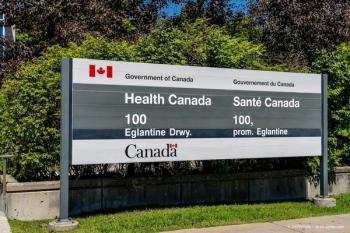
ASRS 2023: Intended versus actual treatment intervals between intravitreal anti-VEGF Injections: effects of treatment delays
In the study, researchers found that nearly one-quarter of anti-VEGF injections were received at least 1 week later than intended.
Reviewed by Christina Y. Weng, MD, MBA
Christina Y. Weng, MD, MBA, and colleagues compared the intended treatment intervals with the actual follow-up intervals for patients treated with anti-vascular endothelial growth factor (VEGF) injections for various retinal diseases in a county hospital and a private clinic. Dr Weng, Professor of Ophthalmology, Fellowship Program Director-Vitreoretinal Diseases & Surgery, Baylor College of Medicine, Cullen Eye Institute, Houston, presented the results at the 2023 annual meeting of the American Society of Retina Specialists in Seattle.
She and her colleagues conducted a retrospective chart review of patients at Ben Taub General Hospital and Baylor College of Medicine, Houston, who had diabetic macular oedema (DME), retinal vein occlusion (RVO) or neovascular age-related macular degeneration (AMD). All patients had been treated between January 1, 2017, and March 1, 2022, with intravitreal anti-VEGF injections. For each injection, the “delta” was defined as the time between the actual and intended follow-up interval.
During the study, 4,857 injections were administered to 518 eyes of 435 patients. A total of 253 (58.2%) patients were being treated for DME, 55 (12.6%) for RVO, and 127 (29.2%) for AMD. Of the 259 patients treated in the county hospital, the mean patient age was 61.1 years and most were Hispanic (63.7%). Of the 176 patients treated in the private clinic, the mean patient age was 75.3 years and most were Caucasian (67.6%), Dr Weng reported.
On an injection-level basis, the mean delta per injection was 14.08 days; 21.1% of anti-VEGF injections were received at least 1 week later than intended. On a patient-level basis, 49.4% of patients had a mean delta exceeding 7 days; 30.1% exceeding 14 days, 23% exceeding 21 days, and 15.9% exceeding 31 days. The mean delta per patient was 20.95 days, and this was greater for the patients treated at the county hospital (mean, 29.41; standard deviation [SD], 55.16) compared with those treated in the private clinic (mean 8.79, SD, 11.03). Longer delays trended with worse visual acuity outcomes.
When the data were stratified based on disease type, the investigators observed a significant difference between the percentage of patients with a clinically significant delta, i.e., exceeding 7 days, for patients with DME patients vs those with AMD (58.9% vs. 35.4%, respectively; P<0.001).
Among all patients, 22.3% were lost to follow-up. When broken down by treatment venue, significantly more of the patients treated in the county hospital were lost to follow-up compared with patients treated in the private clinic (30.1% vs. 10.8%, respectively, P<0.05).
When recorded, the most common reasons for delay among patients treated at the private clinic were personal illness (21%), provider-side reasons (17%), insurance (15%) and vacation/out of town (13%). The most common reasons listed for delays in the county hosptial were personal illness (28%), COVID-19 (27%), weather (11%) and provider-side reasons (10%).
The investigators concluded, “We found that nearly one-quarter of anti-VEGF injections were received at least 1 week later than intended with the proportion of delayed injections and the extent of delay was greater in the county hospital versus private clinic setting. Efforts to improve schedule adherence are warranted to optimise visual acuity outcomes, especially for our most vulnerable populations.”
Newsletter
Get the essential updates shaping the future of pharma manufacturing and compliance—subscribe today to Pharmaceutical Technology and never miss a breakthrough.















































